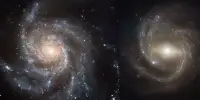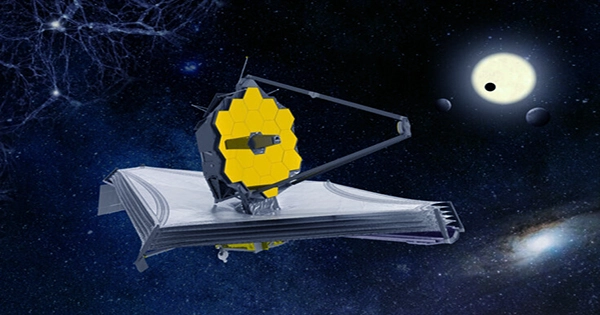NGC 588 is a star cluster in the Triangulum Galaxy (M33), which is a spiral galaxy in the constellation Triangulum. It is a spectacular, large H II ionized diffuse nebula located on the fringes of the spiral arms of the galaxy Messier 33, within the Triangulum constellation. NGC stands for New General List, a list of celestial objects published in the late 1800s by Danish astronomer Johan Dreyer.
The nebula contains two Wolf-Rayet stars, NGC 588-UIT 008 and NGC 588-MC3, as well as a vast population of main sequence stars ranging in mass from 2 to 20 solar masses. The nebula’s more massive stars have masses of roughly 40 solar masses. NGC 588 has a mass of 2300 solar masses and is 4.2 million years old.
Both NGC 588 and NGC 592 (another nebula in the Triangulum galaxy) are important star nurseries in their respective locations. As the hydrogen atoms recombine and release light at appropriate wavelengths, this ionization produces the nebula’s characteristic crimson glow.
Discovery
NGC 588 is a young, open star cluster, which means it is made up of stars that formed from the same molecular cloud and are gravitationally bonded to one another. Heinrich d’Arrest, a German-Danish astronomer, discovered it on October 2, 1861. Open star clusters, such as NGC 588, are common in the disk of a galaxy and can vary in size and age. Astronomers are interested in these clusters because they reveal information on the origin and evolution of stars.
Astronomers value the study of H II areas like NGC 588 because it provides insights into the birth and evolution of stars. The presence of these zones suggests the presence of newly produced, massive stars and their features can be utilized to research star formation processes in distant galaxies.
NGC 588 is a popular subject for amateur astronomers and astrophotographers due to its remarkable appearance and relationship to the larger Triangulum Galaxy. Observing and photographing this H II region can provide a look into the exquisite beauty of the universe and the processes that shape it.
















